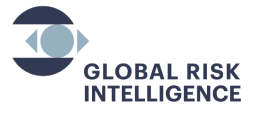Introduction
North and Central America occupy a central position in global finance, linking the Western Hemisphere with trade, migration, and investment corridors that extend toward the Middle East. These financial and commercial connections support legitimate growth but also create exposure to cross-regional risks such as money laundering, sanctions evasion, and terrorism financing.
The United States and Canada underpin regional stability through advanced regulatory systems and proactive enforcement, while neighboring jurisdictions maintain varying oversight capacities that illicit actors may exploit. As trade and digital innovation accelerate cross-border flows, financial crime increasingly hides within legitimate commerce, remittances, and emerging digital markets.
At the same time, regional authorities are strengthening cooperation through transparency reforms, enhanced due diligence, and data-driven financial intelligence. These measures are critical to protecting the integrity of North and Central America’s financial systems.
Financial Convergence and Systemic Exposure
North and Central America occupy a central position in the global financial system. The United States serves as the primary hub for dollar-based transactions and international banking. It plays a leading role in setting global standards for anti-money laundering, counter-terrorism financing, and sanctions enforcement. Canada’s strong banking framework further supports regional stability, while Mexico’s diversified economy, Panama’s role as a re-export and logistics center, and the Northern Triangle’s dependence on remittances illustrate how formal financial institutions and informal markets remain closely connected across the region.
The region’s interconnected financial and trade systems also create avenues for interaction with Middle Eastern counterparts engaged in legitimate commerce, energy investment, and remittance activity. However, these same channels can be misused by networks seeking to conceal the origin of funds or circumvent sanctions.
Evolving Patterns of Illicit Financial Activity
In North and Central America, illicit finance operates within a highly connected and well-developed financial system. The main challenge is not weak regulation but uneven enforcement of otherwise strong frameworks across jurisdictions. Criminal and commercial intermediaries exploit legitimate trade, remittance, and investment channels to move funds through the region’s banking and logistics networks, sometimes linking to trading partners or financial facilitators in the Middle East.
Trade manipulation remains the most common laundering method, now more structured and professionalized. Layered corporate ownership, intermediaries, and complex documentation obscure the pricing and movement of goods, including re-exports that may connect through Middle Eastern markets.
Informal value transfer systems also operate alongside formal banking, especially in communities dependent on remittances. Some hybrid networks blend hawala-style practices with licensed money-service businesses and digital wallets, enabling discreet transfers between North America, Central America, and the Middle East.
High-value commodities and real estate continue to offer opportunities for integrating illicit funds. Some beneficial-ownership reporting in the United States and Canada is improving transparency, but several Central American and Caribbean jurisdictions still face challenges with offshore entities and underregulated intermediaries.
The fastest-changing area is the digital space. Crypto-based laundering increasingly involves regional over-the-counter (OTC) brokers who convert virtual assets into cash, gold, or prepaid value, often moving funds through stablecoins or exchanges linked to foreign jurisdictions.
Regulators in the U.S and Canada are expanding blockchain analytics and enforcing FATF-aligned rules, setting standards that smaller jurisdictions are beginning to follow.
Financial Networks and Cross-Regional Cooperation
The region’s financial system links formal banking, trade, and informal economies across borders. Financial and commercial flows originating in the Middle East regularly reach North and Central America via established shipping routes, correspondent banking relationships, and exchange networks. When these channels are insufficiently monitored, they can be exploited to move illicit funds, obscure ownership, or evade international sanctions.
To address these risks, U.S. agencies such as the Financial Crimes Enforcement Network (FinCEN) and Customs and Border Protection (CBP) coordinate with regional counterparts through Trade Transparency Units (TTUs) and bilateral intelligence exchanges to detect anomalies such as over- and under-invoicing, phantom shipments, and circular trading. FinCEN’s Geographic Targeting Orders (GTOs) further limit anonymity in high-value, all-cash real-estate transactions by requiring title insurance companies to identify beneficial owners in designated U.S. cities.
Joint initiatives increasingly focus on identifying typologies that connect regional trade and remittance channels with broader money-laundering and terrorism-financing networks. Programs supported by USAID and the Bureau of International Narcotics and Law Enforcement Affairs (INL) enhance supervisory capacity, modernize AML frameworks, and promote transparency across remittance-dependent economies.
Risk Landscape and Supervisory Response
Exposure in North and Central America arises not from obvious crime, but from the complex and high-volume trade and financial activity that links the region with the rest of the world. Significant trade flows, robust remittance networks, and rapidly expanding digital finance ecosystems require constant oversight to ensure that cross-regional transactions, particularly those linked to high-risk jurisdictions, are properly screened and verified.
Financial institutions are expected to apply enhanced due diligence (EDD) to trade-related transactions, high-risk clients, and virtual-asset service providers. The integration of beneficial ownership registries, commodity-trade data, and suspicious-activity reporting has begun to reduce long-standing blind spots. Increasingly, public–private partnerships (PPPs) facilitate real-time intelligence sharing and coordinated enforcement, improving the region’s collective capacity to detect and deter cross-border financial crime.
Conclusion
North and Central America’s financial systems reflect both the complexity and adaptability of the global response to illicit finance. Techniques such as trade manipulation, informal transfers, and the use of high-value commodities and digital assets continue to evolve. At the same time, ongoing improvements in transparency, enforcement, and regulatory cooperation are gradually reducing opportunities for misuse. The region’s resilience lies in its capacity to align strong legal frameworks with intelligence-driven collaboration among public authorities, financial institutions, and private-sector actors.
Within this environment, Enhanced Due Diligence (EDD) has become not merely a regulatory expectation but an operational necessity. The growing complexity of ownership structures, cross-border investments, and digital financial activity requires independent, specialized verification of beneficial ownership, source of funds, and transactional legitimacy.
Third-party EDD providers play a crucial role in bridging regulatory and operational gaps, supporting banks, investors, and corporates in maintaining compliance and managing reputational and jurisdictional risks across borders.
Ongoing investment in Enhanced Due Diligence (EDD), data integration, and technology will remain essential to maintaining trust and transparency in North and Central America’s financial systems. Strengthening these measures ensures the region can balance openness with security while reducing opportunities for illicit financial activity.





